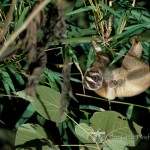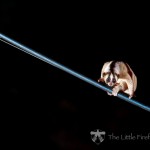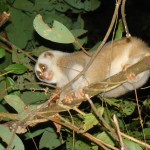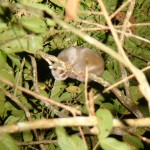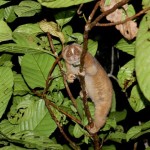Loris Awareness Week Fact 3:
The anatomy: Like all primates, lorises have grasping hands and feet…to an extreme. To put it anatomically, the hands and feet have a thumb and big toe that can be adducted (moved away from) 180o from the other digits allowing them to hold on to branches and prey tightly. This is made possible by a second digit extraordinarily reduced in length that allows for a pincer like grasp…
The behaviour: So if you see a loris in the forest or in a zoo, they are always holding on! In the forest, a loris rarely holds on to one branch. Sometimes they hold on to bundles as the slither along. Their very mobile joints allow one leg above their head, one out to the side, and a an arm somewhere else, as they comically race around their three dimensional branch filled world. The human observer can wonder how they squeeze amongst all those branches and bamboos. When they are on a single branch, they feel less secure, belly pressed close for balance and they race across, like the picture of the animal on the hose pipe above! In zoos, where fewer supports may be offered, lorises may too often cling to wire mesh, which offer the supports they crave. In animal markets, where the wire mesh is just chicken wire, it cuts into their delicate hands and causes severe injury.
Understanding YouTube lorises: Basically, lorises MUST grasp or they get super stressed. They can’t leap, so they actually hold on for dear life. So when a loris reaches out for an umbrella, he is grasping for his life. When a loris holds onto a fork, he is just wishing it were a branch. When a loris holds a finger, it is the same reaction. It is not cute!
Advice for captive management: Lorises use all levels of the forest. At LFP, we have studied all species so far in the wild. They zigzag up and down, up and down. In zoos, sometimes no supports are offered at the floor level, or too few supports are offered. We understand that keepers need to be able to get inside! But somehow providing more connectivity to lorises to keep them off the wire mesh, providing dense connectivity,and supports around which they can grasp is vital.



